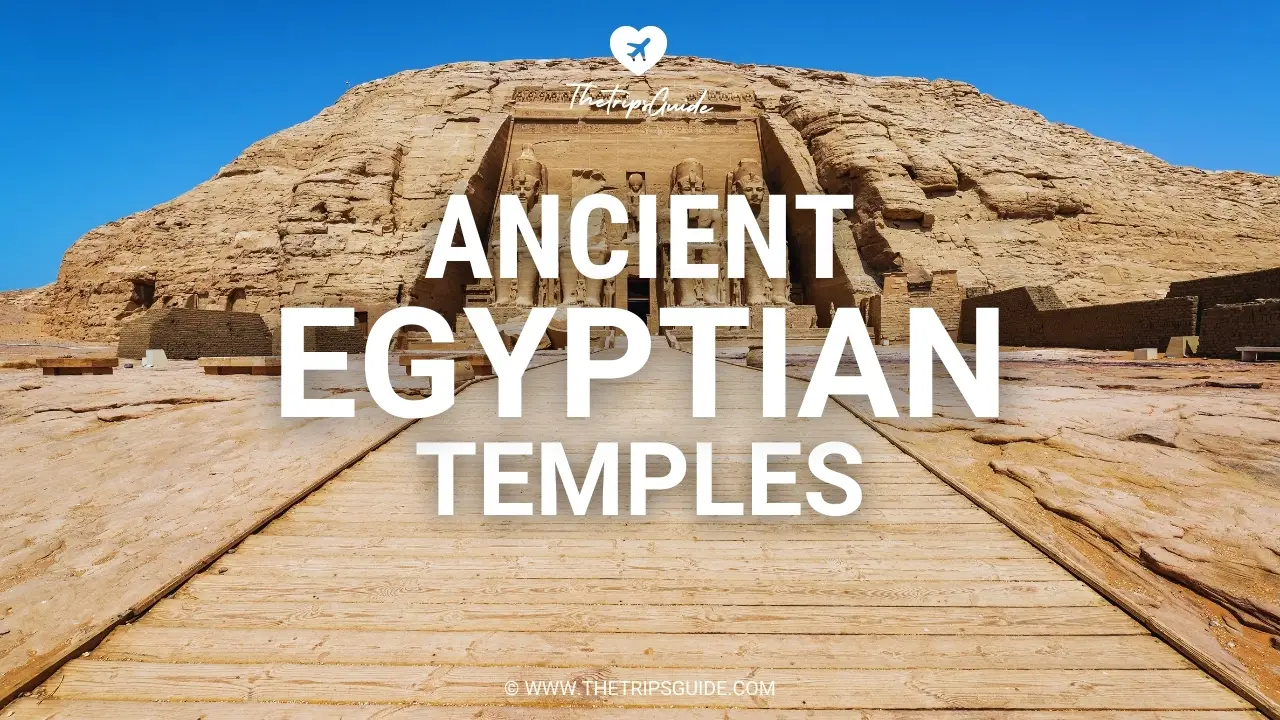
Are you planning a trip to Egypt and eager to explore the most impressive ancient Egyptian temples? If you're not sure what to do in this fascinating country, you've come to the right place.
In this list, we'll take you on a virtual journey through the most remarkable ancient Egyptian temples, sharing fascinating details and insights.
From the grandeur of the Karnak Temple to the mystical aura of Abu Simbel, we'll unveil the wonders that await you.
So, if you're looking for a list of the most impressive ancient Egyptian temples, join us as we embark on a historical adventure to discover these awe-inspiring treasures of the past.
Map of Ancient Egyptian Temples
What's In This Post?
1. Medinet Habu
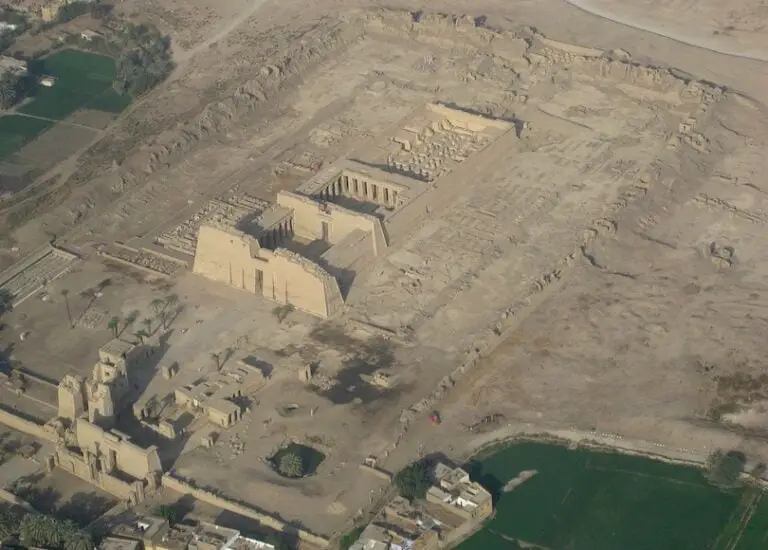
Medinet Habu is an ancient Egyptian temple complex located on the west bank of the Nile River in Luxor. This site holds immense historical and architectural significance, making it a must-visit for anyone interested in ancient Egyptian history. The temple is dedicated to the god Amun and was constructed during the New Kingdom period, primarily during the reign of Ramses III.
Visiting Medinet Habu offers a unique opportunity to immerse oneself in the rich history of Egypt. The temple complex is well-preserved, with its massive sandstone walls adorned with intricate reliefs and hieroglyphics. These inscriptions depict various aspects of ancient Egyptian life, including religious rituals, battles, and daily activities.
The primary attraction within the Medinet Habu complex is the Mortuary Temple of Ramses III. This temple is one of the best-preserved in Egypt and stands as a testament to the architectural and artistic prowess of the ancient Egyptians. The temple features a central courtyard, a hypostyle hall, and various chambers, each with its unique significance.
Exploring Medinet Habu allows visitors to gain insights into the religious and cultural practices of ancient Egypt. The temple complex served as a place of worship and ritual, and the hieroglyphics on the walls provide valuable information about the gods and religious beliefs of that era. Additionally, the depiction of battles and historical events on the temple walls offers a glimpse into the military prowess and political landscape of ancient Egypt.
Medinet Habu is not just a historical site but also a place of natural beauty. The surrounding area features lush greenery and offers a peaceful and serene environment for visitors to enjoy. It is an ideal spot to relax and take in the breathtaking scenery along the Nile River.
2. Temple of Kom Ombo

The Temple of Kom Ombo is a unique double temple located in the town of Kom Ombo, about 30 miles north of Aswan. What makes this temple particularly fascinating is that it is dedicated to two different gods: Sobek, the crocodile god, and Horus, the falcon-headed god. This dual dedication sets the Temple of Kom Ombo apart from other ancient Egyptian temples.
The temple's design is symmetrical, with two identical sections dedicated to each god. It features a central courtyard, various halls, and chambers adorned with well-preserved reliefs and inscriptions. The reliefs depict medical instruments and scenes of surgical procedures, as the temple also served as a place of healing and medical knowledge in ancient times.
One of the most striking features of the Temple of Kom Ombo is its crocodile museum, displaying mummified crocodiles found in the vicinity. Crocodiles were considered sacred in the region, and their mummification was an important part of the temple's rituals. These mummies offer a glimpse into the religious practices of ancient Egypt.
Visiting the Temple of Kom Ombo provides an opportunity to explore the duality of ancient Egyptian beliefs. The coexistence of Sobek and Horus in a single temple reflects the complex and multifaceted nature of ancient Egyptian religion. It also offers insights into the importance of medicine and healing in ancient times.
3. Colossi of Memnon
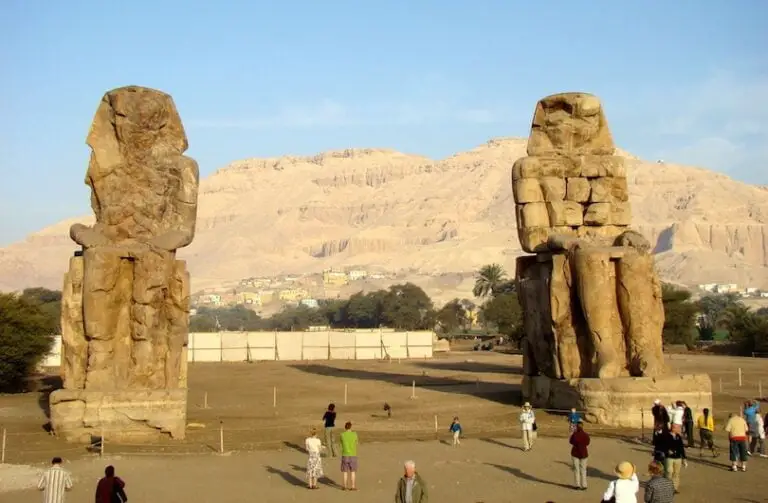
The Colossi of Memnon are two colossal statues of Pharaoh Amenhotep III, located on the west bank of the Nile River, near Luxor. These statues are known for their immense size and have been iconic landmarks for thousands of years. Standing at around 60 feet in height, the Colossi of Memnon are a sight to behold.
These statues once guarded the entrance to Amenhotep III's mortuary temple, which no longer stands in its full glory. While the temple itself has largely disappeared over the millennia, the Colossi of Memnon have withstood the test of time, making them a remarkable archaeological treasure.
The statues are carved from massive blocks of quartzite sandstone and depict Amenhotep III in a seated position. They are intricately detailed, with the pharaoh's regal attire and various inscriptions and hieroglyphics. One of the statues was damaged in an ancient earthquake, leading to the famous “singing” or “talking” phenomenon. In the morning, the statue would emit a faint sound due to temperature changes and sunlight, which was believed by the ancient Egyptians to be the statue “singing.”
Visiting the Colossi of Memnon allows travelers to connect with the grandeur of ancient Egyptian civilization. These statues represent the power and majesty of the pharaohs and provide a glimpse into the craftsmanship and artistry of the time.
4. Philae Temples
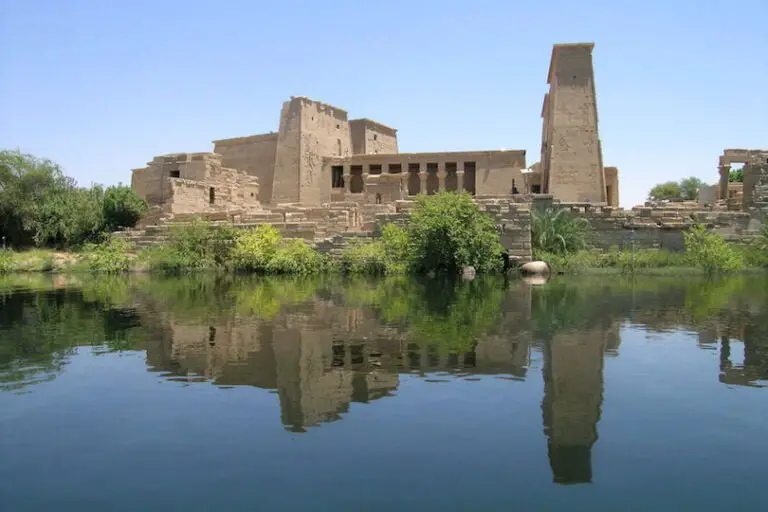
The Philae Temples, located on an island in the Nile River near Aswan, are a collection of ancient temples dedicated to various deities, with the primary focus on the goddess Isis. This site is known for its stunning beauty and rich history, making it one of the most picturesque and spiritually significant places in Egypt.
The temples on Philae Island were constructed during the Ptolemaic and Roman periods, which distinguishes them from the temples of the New Kingdom era. They exhibit a unique blend of ancient Egyptian and Greco-Roman architectural styles, making them stand out among other Egyptian temples.
The most prominent temple on Philae Island is the Temple of Isis, which is dedicated to the goddess of magic and motherhood. The temple features beautiful colonnades, chambers, and courtyards adorned with intricate reliefs and inscriptions. The hieroglyphics on the temple walls tell stories of the goddess Isis, her husband Osiris, and their son Horus.
Visiting the Philae Temples allows travelers to immerse themselves in the worship and rituals of ancient Egyptian religion. The serene surroundings of the island and the tranquil waters of the Nile create a peaceful atmosphere, making it an ideal place for spiritual reflection and exploration.
5. Temple of Edfu
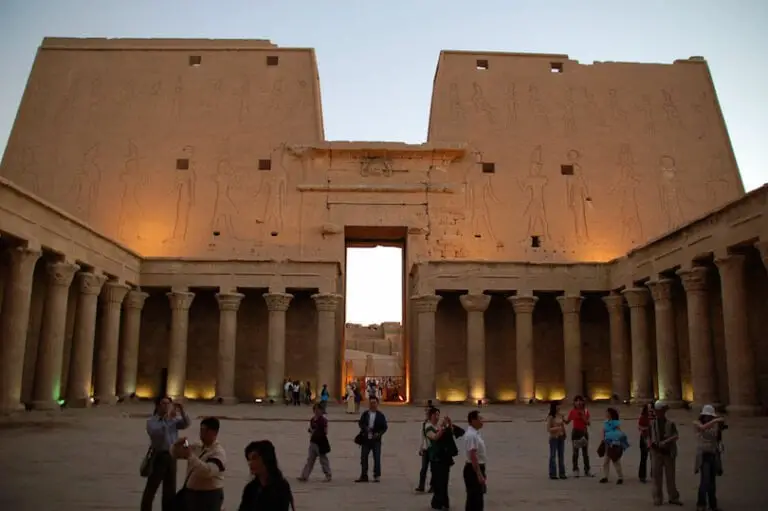
The Temple of Edfu, also known as the Temple of Horus, is one of the best-preserved temples in all of Egypt. It is located in the town of Edfu, on the west bank of the Nile River, and is dedicated to the falcon-headed god Horus. This temple is a marvel of ancient Egyptian architecture and religious significance.
Construction of the Temple of Edfu began in the Ptolemaic period and continued through the Roman era, making it one of the last major temples built in Egypt. The temple's grand entrance is flanked by two colossal statues of Horus and is adorned with beautifully preserved hieroglyphics and reliefs.
Exploring the Temple of Edfu allows visitors to appreciate the grandeur and intricacy of ancient Egyptian temple design. The temple follows a traditional layout with a large courtyard, hypostyle hall, sanctuaries, and various chambers, each with a specific purpose in the religious rituals and ceremonies of the time.
One of the most significant aspects of the Temple of Edfu is its extensive inscriptions that provide valuable information about ancient Egyptian religious beliefs, rituals, and mythology. These inscriptions offer a glimpse into the role of the god Horus and his importance in the ancient Egyptian pantheon.
In addition to its historical and religious significance, the Temple of Edfu is a remarkable architectural achievement. Its well-preserved state allows visitors to step back in time and appreciate the craftsmanship and artistry of the ancient Egyptians.
6. Temple of Seti I
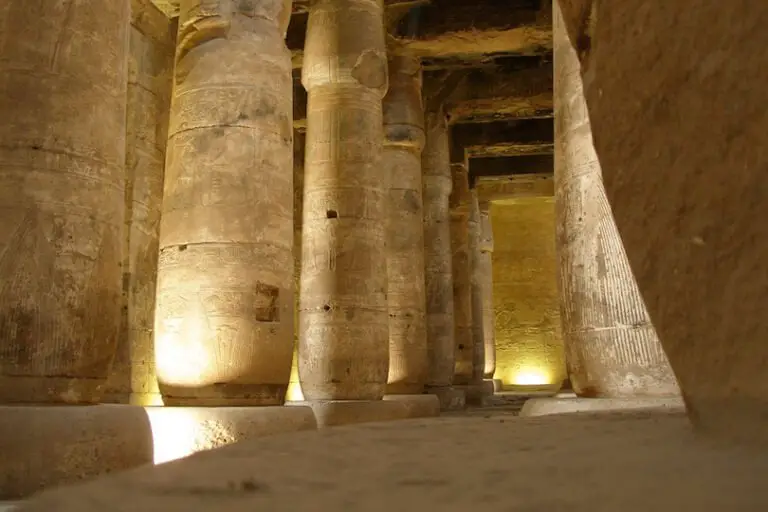
The Temple of Seti I, also known as the Great Temple of Abydos, is a remarkable ancient Egyptian temple located in Abydos, one of the most important pilgrimage sites in ancient Egypt. This temple is dedicated to the god Osiris, the god of the afterlife, and was built during the New Kingdom period by Pharaoh Seti I and his son Ramses II.
The Temple of Seti I is known for its well-preserved reliefs and hieroglyphics, which depict scenes from the life of the pharaoh, religious rituals, and offerings to the gods. The temple's hypostyle hall is particularly noteworthy, with its 36 massive columns, each intricately carved with depictions of Seti I making offerings to various deities.
Exploring this temple provides a unique opportunity to delve into the religious and mythological aspects of ancient Egypt. The intricate carvings on the walls offer insights into the ancient Egyptians' beliefs in the afterlife and the importance of Osiris. The temple also contains a cenotaph, a symbolic tomb for Osiris, where rituals and offerings were made.
The Temple of Seti I stands as a testament to the artistic and architectural achievements of the New Kingdom period. Its meticulous craftsmanship and the quality of its reliefs make it a treasure trove for historians and enthusiasts of ancient Egyptian culture.
7. Temple of Hatshepsut
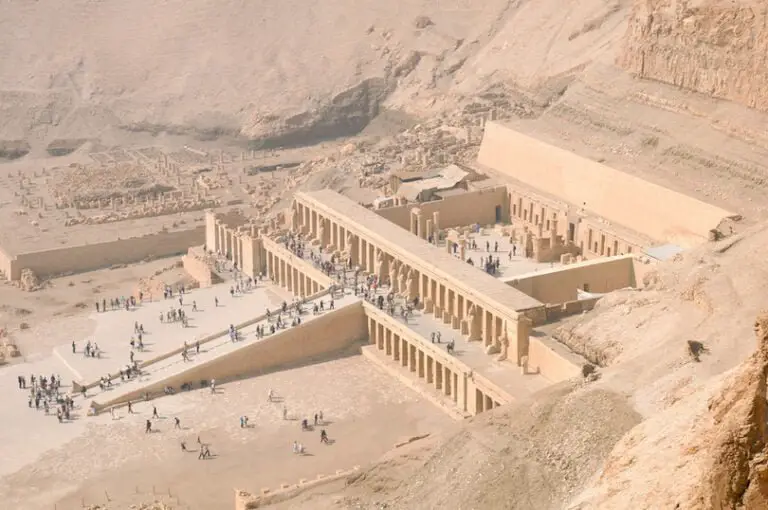
The Temple of Hatshepsut, also known as Deir el-Bahri, is an extraordinary funerary temple located on the west bank of the Nile River, near Luxor. This temple is dedicated to the female pharaoh Hatshepsut, who is one of the most remarkable and controversial figures in ancient Egyptian history. Her temple is a testament to her reign and achievements.
The design of the Temple of Hatshepsut is unique and stands out from other ancient Egyptian temples. It is built into a natural amphitheater-like setting and consists of three terraced levels connected by ramps. The temple's architecture is a blend of traditional Egyptian style and elements of the Mediterranean world.
The temple's reliefs and inscriptions narrate the story of Hatshepsut's divine birth and her accomplishments as a ruler. The temple also features stunning statues of the female pharaoh, portraying her in various regal poses.
Visiting the Temple of Hatshepsut allows travelers to explore the history of this remarkable woman who defied convention by ruling as a female pharaoh. It provides insights into the culture and politics of ancient Egypt, as well as the role of women in positions of power in the ancient world.
8. Luxor Temple
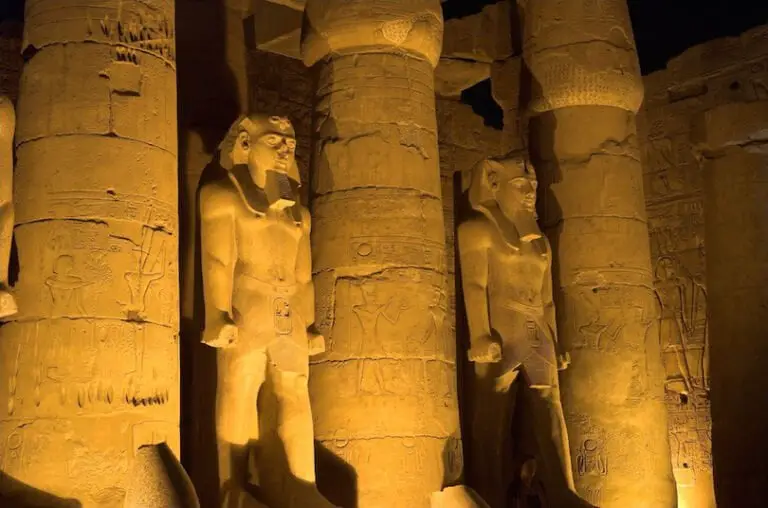
Luxor Temple is a grand and awe-inspiring temple complex located in the heart of Luxor, on the east bank of the Nile River. This temple is dedicated to the god Amun, making it one of the most significant religious sites in ancient Egypt. It was primarily constructed during the New Kingdom period, with contributions from various pharaohs over time.
The Luxor Temple is renowned for its monumental entrance, the Avenue of Sphinxes, which connected it to the Karnak Temple complex. The temple features massive columns, spacious courtyards, and a sanctuary where the statue of Amun was housed during religious ceremonies. The temple is adorned with intricate hieroglyphics and reliefs, providing insights into ancient Egyptian rituals and mythology.
Visiting Luxor Temple allows travelers to immerse themselves in the religious and cultural heritage of ancient Egypt. The temple played a central role in religious festivals and processions during its time, and its well-preserved state offers a glimpse into the grandeur of these events.
The location of Luxor Temple in the modern city of Luxor makes it easily accessible, and its proximity to the Nile River provides a scenic and picturesque backdrop for exploration.
9. Abu Simbel
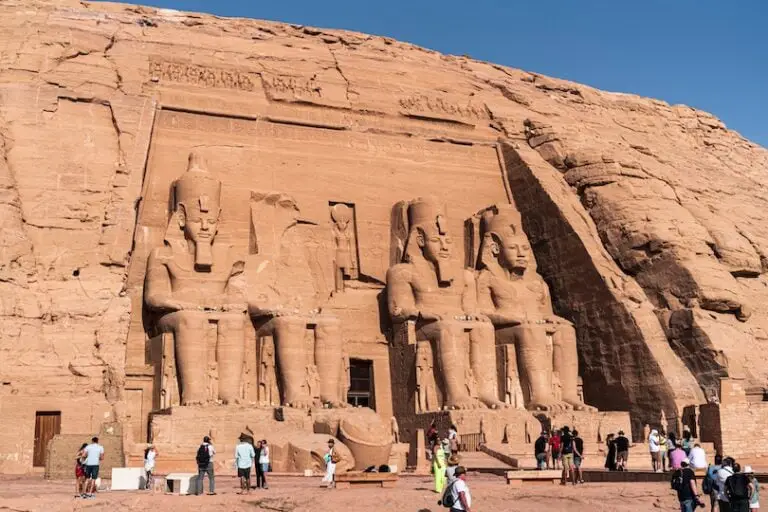
The Abu Simbel temples, located in southern Egypt near Lake Nasser, are a pair of stunning rock-cut temples built by Pharaoh Ramses II. These temples are dedicated to Ramses II himself, as well as the gods Amun, Ra-Horakhty, and Ptah. The Abu Simbel temples are some of the most iconic and monumental ancient Egyptian structures in existence.
What sets Abu Simbel apart is not just the grandeur of the temples but also the incredible engineering feat of relocating them in the 1960s to save them from being submerged by the rising waters of the Aswan High Dam. This massive undertaking involved disassembling the temples and relocating them to higher ground, preserving these historical treasures.
The larger of the two temples at Abu Simbel is dedicated to Ramses II and features four colossal statues of the pharaoh at the entrance. The interior of the temple is adorned with intricate carvings and reliefs that depict the pharaoh's military victories and religious devotion. The smaller temple, dedicated to the goddess Hathor and Nefertari, is equally impressive, with statues of Ramses II and his queen.
Visiting Abu Simbel offers travelers a chance to witness the architectural and artistic prowess of ancient Egypt on a grand scale. The colossal statues and the intricate details within the temples showcase the power, ambition, and religious devotion of Ramses II.
10. Karnak
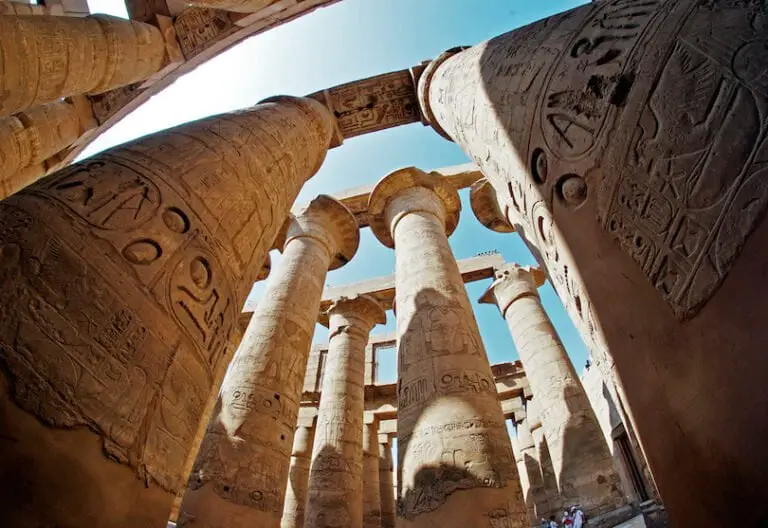
The Karnak Temple Complex, located in Luxor, is one of the most extensive and magnificent temple complexes in Egypt. It is dedicated to the god Amun and served as the primary religious center in ancient Egypt. The construction of Karnak spanned over 2,000 years, involving multiple pharaohs who contributed to its grandeur.
Karnak is known for its vast open-air courtyards, colossal columns, and a series of interconnected temples, chapels, and sanctuaries. The Great Hypostyle Hall is one of its most striking features, with its forest of towering columns adorned with intricate hieroglyphics and reliefs.
Exploring Karnak is like stepping into a sacred city of ancient Egypt. The temple complex was not only a place of worship but also a hub of religious and cultural activities. It hosted various festivals, processions, and rituals that brought together priests, pharaohs, and common people.
The Avenue of Sphinxes, connecting Luxor Temple to Karnak, is a monumental pathway that adds to the grandeur of the site. It was used for religious processions and served as a symbolic path of communication between the two temples.
Visiting Karnak allows travelers to appreciate the spiritual and cultural significance of ancient Egyptian civilization. The sheer scale of the complex and the intricacy of its architecture and artwork are a testament to the advanced knowledge and creativity of the ancient Egyptians.
Thanks for reading!
I truly hope this guide about the most impressive ancient Egyptian temples helps you explore the fascinating world of ancient history and architecture. Egypt is a treasure trove of historical wonders, and these temples are a testament to the incredible achievements of the past.
Whether you're planning a visit or simply want to learn more about these remarkable structures, we've got you covered. From the iconic Karnak Temple to the mysterious Abu Simbel, there's so much to discover.
Feel free to ask any questions you may have about these temples, and we'll be happy to provide more insights. Once you've had the chance to explore these ancient marvels, we'd love to hear your thoughts and experiences.
If you found this guide helpful and informative, please consider sharing it on social media to help us reach more enthusiasts of history and culture. Your support is greatly appreciated, and it allows us to continue creating content like this.
Don't forget to explore the rest of our travel guide for more exciting destinations and travel tips. Egypt has so much more to offer, and we're here to guide you on your journey through history and adventure.